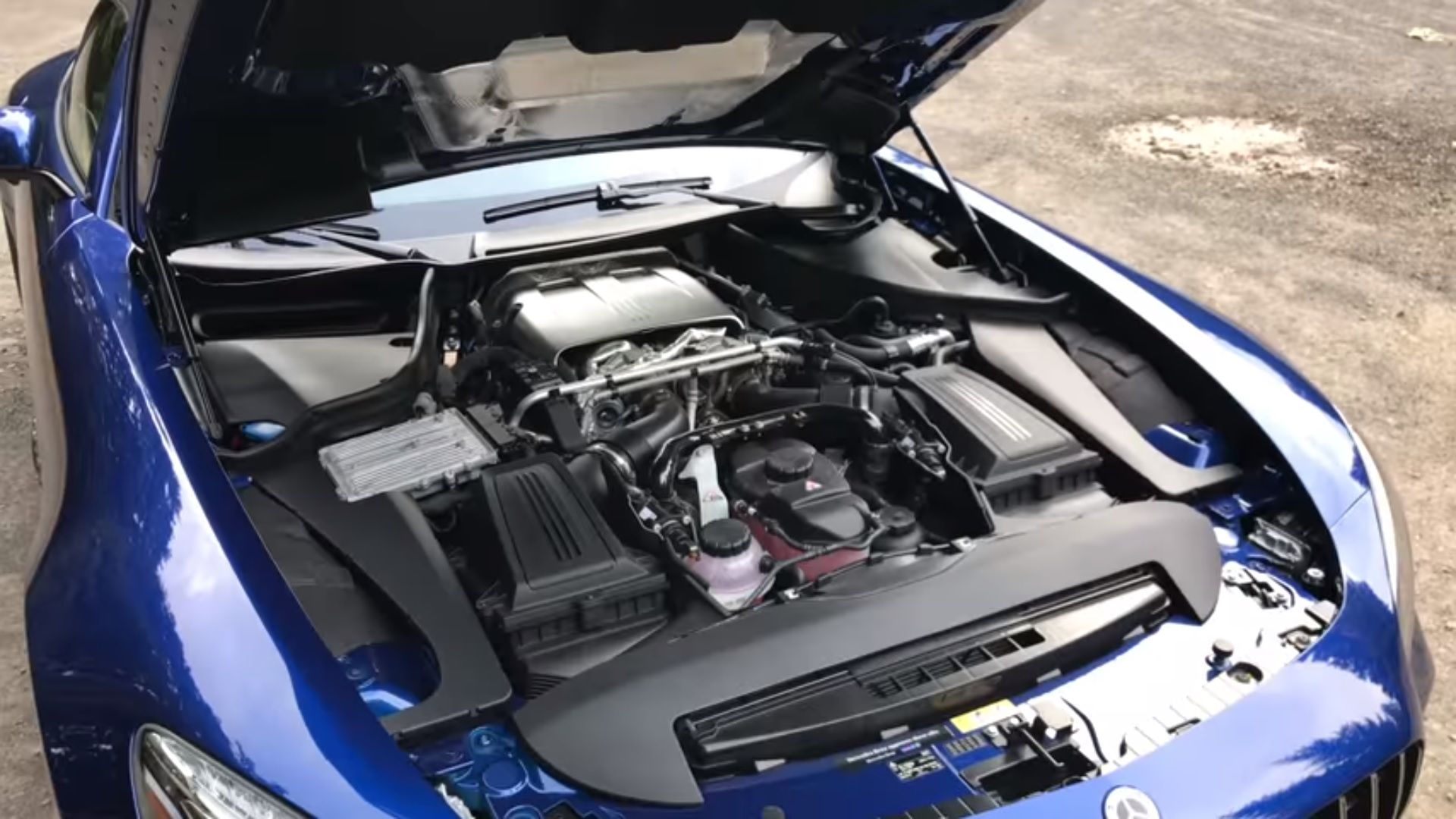Many modern automakers use turbocharging to create more power from an engine without negatively affecting fuel economy during mundane driving. Most turbochargers can be found bolted to the exhaust manifold and hanging off the engine’s side. While economical to engineer and produce, this turbo layout can be less efficient due to extra-long plumbing, which causes the dreaded turbo lag. However, a few automakers employ what’s called a Hot V engine layout that’s designed to nearly eliminate turbo lag while also making it easier to ingest cooler air into the combustion chambers.
How does it work? Well, Engineering Explained takes a deep look at how Mercedes-AMG uses a Hot V design on its 4.0-liter twin-turbo V-8 found in the GT.
Long story short – a Hot V engine uses reverse-flow cylinder heads that pull cool air from two separate intake manifolds mounted on the outside of the engine and expel the hot exhaust towards the inside of the engine’s V. Basically, the intake and exhaust manifolds trade places. This allows the turbochargers to be mounted within the engine’s valley and very close to the exhaust ports. The advantage is reduced turbo lag thanks to the close proximity of the turbo’s compressor wheel to the combustion chamber. Reduced turbo lag directly translates to improved throttle response and a near-instant gain in boost.
Aside from that benefit, a Hot V design also keeps intake temperatures cooler. This happens because the intake manifolds are located on the outside of the V where ambient airflow is greater and heat soak is less prevalent. A reduction in intake temperatures means cooler air. Cooler air is denser and can therefore provide more oxygen to the combustion process, thereby improving the engine’s power output.
Mercedes is only one automaker to use the Hot V design. BMW uses it on its modern twin-turbocharged V-8s like in its M products, Audi’s 4.0-liter twin-turbo V-8 uses it, and the Porsche 918 even has a Hot V despite it not having turbos. Ferrari even used a Hot V design in its Formula 1 engine from 1981 to 1984, 1.5-liter twin-turbo V-6. Sports car fans might be surprised to hear both Ford and General Motors uses Hot V designs on their V-8 turbodiesels. Yep, both the 6.7-liter Power Stroke and 6.6-liter Duramax have their turbochargers mounted up top.
References
Mercedes-AMG GT
Read our full review on the 2016 Mercedes-AMG GT.
Read our full review on the 2018 Mercedes-AMG GT C.

